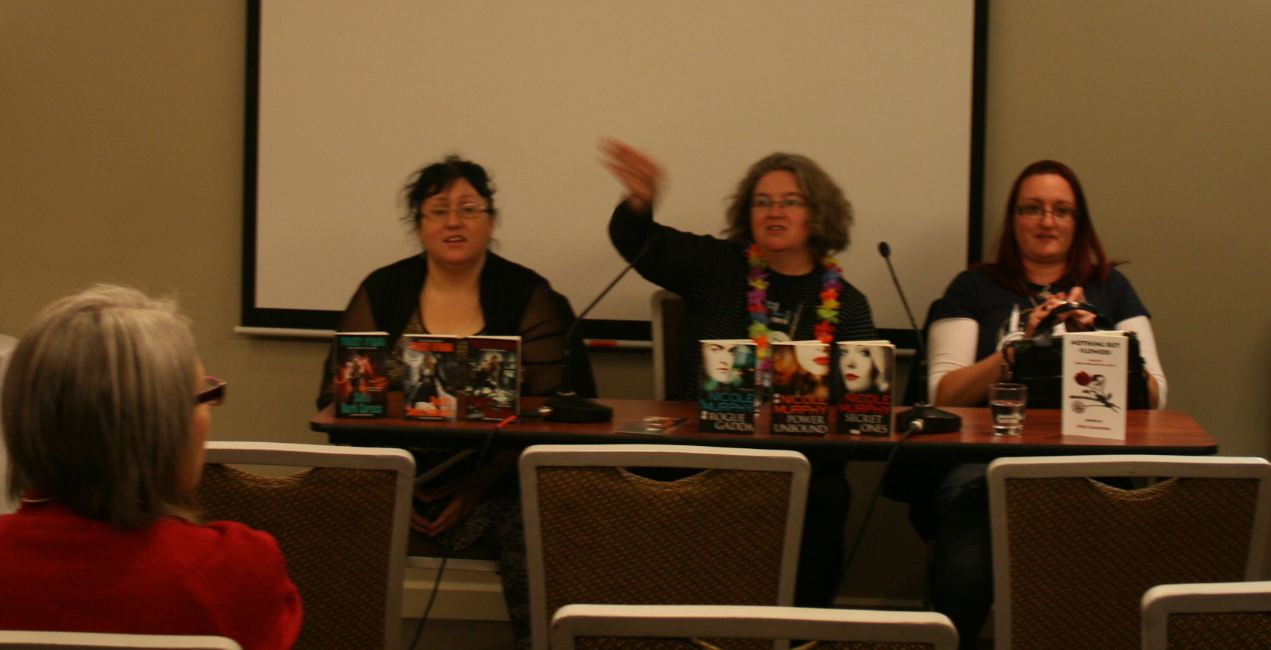Conflux 8 Report – Part 3: Day 1 After-Lunch Panels
Lunch on Day 1 of Conflux 8 was over almost
before we realised it and many of us had to scramble to make the first
after-lunch panel on time. Something I’m going to have to remember to have a
better handle on at Conflux 9.
Several interesting panels ran after lunch,
but I couldn’t attend them all. Here are the ones I was able to get to, and
each one was well worth it.
1300-1400:
Romance Writers of the Apocalypse with Tracey O’Hara, Nicole Murphy and Jodi Cleghorn
| Panelists (from left to right): Tracey O'Hara, Nicole Murphy, Jodi Cleghorn. |
1400-1500:
The art of scene and mood setting in dark speculative fiction with Tracey O’Hara, Alan Baxter and Lily Mulholland
| Panelists (from left to right): Lily Mulholland, Tracey O'Hara, Alan Baxter |

One of the most important elements of
scene and mood setting these panelists pointed out was place. They discussed
how place was important to story, and how applying the dark aspects of a place
assists in building its character. Examples of writers good at creating place
included Stephen King, Paul Haines, Joanne Anderton and Steig Larsson.
1500-1600:
Keith Stevenson Guest Spot with Keith Stevenson
| Keith Stevenson (Coeur de Lion Publishing) |
Keith Stevenson needs little
introduction in the field of Australian speculative fiction and publishing. He
spoke about the changes going on in the publishing industry at the moment, and
then moved on to the importance of editors in whatever mode of publishing a
writer selects. Keith also spoke about the different types of editing and
emphasised that every piece of work benefits from editing.
1600-1700:
How do you write a good non-human romantic lead? with Janeen Webb, Keri Arthur,
and Tracey O’Hara
The key element to making a non-human
romantic lead successful was to make them human enough that the reader could
relate to them, but alien enough to make them believable non-human. The appeal
in a non-human romantic lead was more about the emotional than the physical as
this was where readers were most likely to make the connection. They also
talked about the ways characters had to grow, and that characters should
provide readers with a reason to cheer them on. It was also important to note
that there were some lines writers should not cross in the depiction of
non-human sex, such as no rape or bestiality.
| Panelists (from left to right): Tracey O'Hara, Janeen Webb, Keri Arthur |
And
there endeth the day… for me at least. There were
some excellent panels remaining, and five books being launched, but I was
exhausted and needed to go home. Next year, perhaps…




Comments
Post a Comment